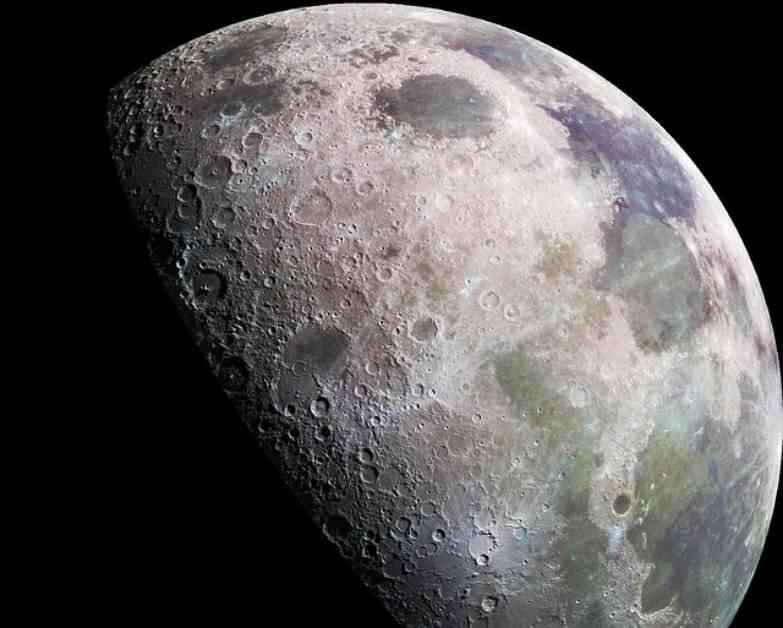The Blue Ghost lunar lander, operated by Texas-based Firefly Aerospace, is currently in the moon’s orbit, preparing for an imminent landing near “Mons Latreille,” approximately 450 km from Chandrayaan-3’s landing site. This strategic location is an ancient volcanic feature situated in the expansive Mare Crisium, also known as the “Sea of Crises,” serving as a pivotal point for future lunar missions like NASA’s Artemis initiative. The increased interest in the moon’s south pole stems from its potential water ice reserves and mineral wealth, positioning it as a prime target for exploration.
Unveiling Lunar Mysteries: A Closer Look at Blue Ghost’s Journey
In the recent wave of space exploration, missions like China’s Chang’e-4 and India’s Chandrayaan-3 have honed their focus on the moon’s south pole, each revealing unique facets of this enigmatic region. Chang’e-4’s Yutu-2 rover captured panoramic images of a rock-free landing area, contrasting Chandrayaan-3’s Pragyan rover’s discovery of scattered rock fragments at the site. This divergence underscores the importance of identifying the origin of these fragments, shedding light on the moon’s geological evolution and history.
Indian scientists have uncovered fascinating revelations at the Shiv Shakti Point, Chandrayaan-3’s landing site, dating back 3.7 billion years—coinciding with the emergence of early life forms on Earth. Research initiatives led by India’s Physical Research Laboratory and Space Application Centre suggest that exploring materials ejected from nearby craters could unlock valuable insights into the moon’s geological timeline, offering a window into its ancient past.
Charting New Territories: Exploring the Alternate Landing Site
Delineating a new Alternate Landing Site (ALS) located 450 kilometers away from Chandrayaan-3’s designated spot, researchers have identified a hazard-free zone for future lunar missions. The ALS, where Blue Ghost is poised to touch down, boasts a smooth terrain with an elevated central region bordered by fresh craters and an abundance of boulders. Notably, the presence of the young Tycho crater, formed a mere 108 million years ago, indicates that the ALS is significantly younger than Chandrayaan-3’s landing site, offering a fresh perspective on lunar geology.
Since its successful lunar orbit insertion on February 13, the Blue Ghost lander has captivated audiences with stunning visuals of the moon’s far side, previously unseen from Earth. Transitioning to a lower elliptical orbit approximately 120 kilometers above the lunar surface, the lander is poised for a dramatic descent on March 2, embarking on a mission slated to last approximately one lunar day, equivalent to 14 Earth days. The looming lunar night, characterized by extreme cold and darkness, will signal the end of operations for the spacecraft.
Meanwhile, a pivotal moment awaits the Blue Ghost team with the upcoming solar eclipse on March 14, as Earth’s shadow briefly obscures sunlight from reaching the moon, casting the lander into a temporary darkness. Additionally, scientists anticipate the mesmerizing lunar sunset on March 16, aiming to witness the phenomenon of dust levitation observed by Apollo astronauts. These celestial events promise to offer unprecedented insights into lunar dynamics and further our understanding of the moon’s intricate environment.
“The latest moon footage captured by Firefly’s Blue Ghost lunar lander is truly awe-inspiring,” remarked Joseph Marlin, an engineer on the mission, in an interview with CNN. “Witnessing the moon’s craters and boulders through our spacecraft’s lens is a poignant reminder of the dedication and effort invested in this mission, bringing us closer to our ultimate goal.”
Carrying a suite of 10 NASA science and technology instruments, the Blue Ghost lander is primed to delve into lunar dust, regolith, and surface properties post-landing, culminating in a comprehensive analysis lasting over two weeks. This data will be instrumental in shaping NASA’s Artemis program, a monumental initiative poised to return astronauts to the moon after a hiatus of more than half a century, setting the stage for future manned missions to Mars.
As the competition to explore the moon’s terrain escalates, the success of the Blue Ghost mission stands to yield invaluable data for upcoming lunar ventures, ushering in a new era of lunar exploration and scientific discovery.














